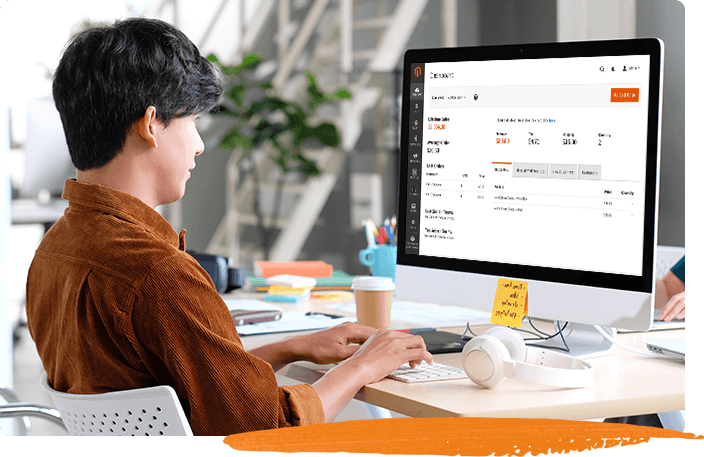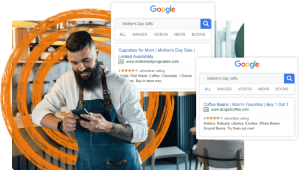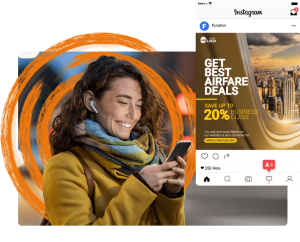Every business wants to be visible above the fold on Google in order to drive traffic to their site.
Every business wants to be visible above the fold on Google in order to drive traffic to their site. This means you must invest the time and effort in applying comprehensive search engine strategies which reinforce optimisation both on and off-page.
SEO does not have a one size fits all approach however, there are some key elements that every online entrepreneur should be thinking about when trying to optimise their eCommerce site.
1. Use PPC and SEO together
Pay Per Click, also known as PPC, is a great digital marketing tool that should operate as a part of a robust SEO strategy. To make it simple, think of PPC as the peanut butter and SEO as the jelly – everyone knows they taste so good together! Simultaneously running organic and paid campaigns gives you double the data to analyse, all that useful information can help you optimise your overall SEO campaign. Each of these elements work together to create the perfect highly visible sandwich.
2. Stop Using Duplicate Content
We all know that if you have a pair of blue jeans and light blue jeans you’re going to call them both – blue jeans. This often leaves your site riddled with duplicate content. Unfortunately, Google says you need to make time to describe your “true blue classic jean” differently to your “classic style light blue jean”. Without optimising your content you risk washing away your site rankings! Try getting in touch with your creative side or a copywriter and slowly update existing content to include more detailed product descriptions that avoid repetition. Wisely, another option is to use the rel=”canonical” tag to de-index and no-follow pages with content that is similar.
3. Keep On Blogging
Blogging is an excellent way to engage with your targeted traffic. After all, you’re reading this right now and you’re interested = engagement. While you position yourself as a high quality knowledge base on all things industry, you also improve your site indexing rate. Blog creation produces unique and meaningful content that helps you stand out from the crowd. For example, if you are selling shaggy rugs, your blog post title could be “3 ways to help decide which shaggy rug is right for you?” – You can then internally link important SEO determined keywords into that page. A great benefit of blogging is the ability to improve your sites visibility for specific keywords.
4. Optimise Product Images With Alt Tags
Ever wondered how Google always turns up the exact image you wanted – well it isn’t because it reads minds, it’s all down to the alt tags. Every product image you come across generally has an attached list of alt tags. Every keyword you include as part of your product image should be appropriate for optimisation. Let us use the example of a 2014 black leather diary, your alt can be something like alt= “Black Leather 2014 Diary”
Bonus tip: Do not keyword stuff your alt tag with every word related to the item like “Buy Now 2014 Black Cheap Leather Diary On Sale” Google will likely penalise you for over optimisation.
5. Meta descriptions and titles
Although Google doesn’t necessarily reward you for meta descriptions and titles on each page of your website, your prospects may. Having relevant keywords in your meta description can increase the chances of a customer clicking through because it related to their search. Make sure if you are going to use meta descriptions that they are unique and compelling and endorse top keywords as to improve the click through rate, for any given page.
6. Unique navigational structure
Google advises that website architecture like SEO friendly navigation and usability is important to rank well. To approach this, your site should have landing pages for products that are most important to your prospects. Another element of this, is to implement in-site search navigation that allows users to get information quickly and directly.
7. Redirect expired product URLs
A time comes when a product is out of stock, or becomes obsolete. For products like these, Google suggests to use a permanent 301 page that redirect to related product pages. A 301 page tells a search engine that you’ve permanently moved your site from one domain to another but you want to pass on all those good link juices you accrued to maintain your rankings in Google. This is a better alternative to just deleting that page and leaving lots of 404 error pages. Prospects will leave your page and not search for alternatives, you need to show them!
Digital Animals is a dedicated ecommerce company that has extensive knowledge with regards to SEO, Magento and digital marketing. Our aim is to help you craft a customised ecommerce SEO strategy that makes you stand out from the crowd.







